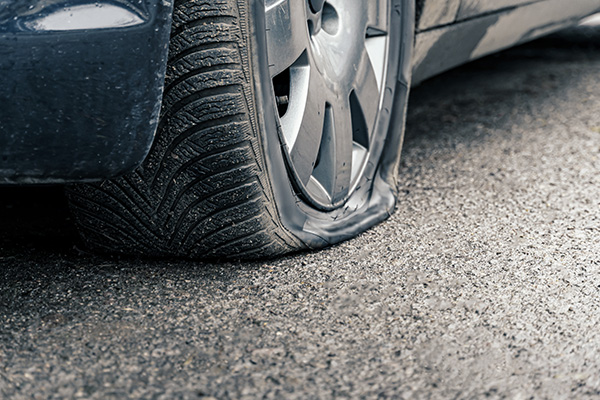
It’s frustrating to come out to your car in the morning and find one of your tires sitting lower than the others, or completely flat. Naturally, the first thing most people assume is that there’s a nail, screw, or some kind of puncture. But what if there’s no visible damage? Is it really possible for a tire to go flat without a hole?
Tires can lose air over time for several reasons that don’t involve any kind of puncture. Some are gradual and easy to miss, while others can lead to sudden pressure loss. Understanding these causes can help you avoid unnecessary tire replacements and keep your vehicle safer on the road.
Temperature Changes and Air Pressure
One of the most common reasons a tire loses pressure without a hole is simply the weather. Cold air causes the air inside your tires to contract. For every 10-degree drop in temperature, tire pressure can drop by about 1 to 2 PSI. That’s why your tire pressure warning light tends to pop up more often during the colder months in places like Auburn.
If you haven’t topped off your tires since the seasons changed, it’s very possible that your tire is technically fine but needs to be reinflated. The pressure drop from cold weather usually doesn’t make a tire go completely flat, but it can bring it low enough to cause problems with handling and fuel economy.
Valve Stem Leaks
Another common culprit is a leaking valve stem. This is the small rubber or metal piece you unscrew to add air. Over time, the valve core inside can degrade or get stuck open slightly, allowing air to leak slowly. In some cases, the entire stem can crack or dry out, especially in older tires or after exposure to road salt and debris.
If your tire is consistently low and there’s no nail or puncture in the tread, the valve stem should be checked first. A quick spray of soapy water can reveal a slow leak by showing small bubbles forming around the stem.
Bead Leaks Around the Rim
Tires are sealed to the rim along a thick rubber edge called the bead. When corrosion builds up on the rim, often due to moisture, salt, or old age, it can prevent the tire from sealing properly. That creates small gaps where air can escape, even if the tire itself is in good shape.
This kind of leak is slow and inconsistent. One day the tire might look fine, and the next day it’s visibly deflated. It often worsens in colder temperatures or after hitting a pothole or curb that disturbs the bead area.
In many cases, the fix involves removing the tire, cleaning or refinishing the wheel, and resealing the tire bead with a special compound. You don’t necessarily need a new tire, but it does require a professional inspection.
Aging or Worn Tires
Even without punctures, old tires can start to lose air more quickly. The rubber becomes more porous over time, especially if the tires have been exposed to sunlight, heat, or chemicals. Tiny cracks in the sidewalls or tread area can lead to slow leaks that are hard to detect.
Tires that are past their service life (typically 6 to 10 years), should be replaced regardless of tread depth. Slow leaks are just one of many issues that come with aging rubber, including reduced grip, longer stopping distances, and a higher risk of blowouts.
Improperly Seated Tires
If a tire was recently mounted or remounted and wasn’t seated properly on the rim, it could leak around the edges. This is less common with professional installation, but it can happen if the wheel wasn’t cleaned before installation or if the tire bead was damaged during the mounting process.
Low-quality sealants or quick fixes might temporarily fix the problem, but they usually don’t solve the root problem. If your tire has been losing air since it was installed, have it checked by a shop with proper mounting and balancing equipment.
Tiny Punctures That Go Unnoticed
Lastly, not all tire punctures are obvious. Nails, screws, or sharp debris can cause tiny holes that don’t leak air quickly. These punctures may not be visible at a glance and could be located on the shoulder or sidewall where standard patches can’t be applied.
If you’ve ruled out other causes and the tire continues to deflate, a professional inspection is the only way to find these micro leaks. Sometimes, a simple plug or patch is all needed to solve the issue for good.
Fuller Automotive – Tire Experts in Auburn, MA
At Fuller Automotive, we’ve seen just about every reason a tire can lose pressure. Whether it’s a slow bead leak, a faulty valve stem, or a hidden puncture, we can help you find the cause and fix it the right way. If your tire keeps going flat with no obvious damage, stop by our Auburn shop for a thorough inspection and honest advice. We’ll get you back on the road safely and confidently.